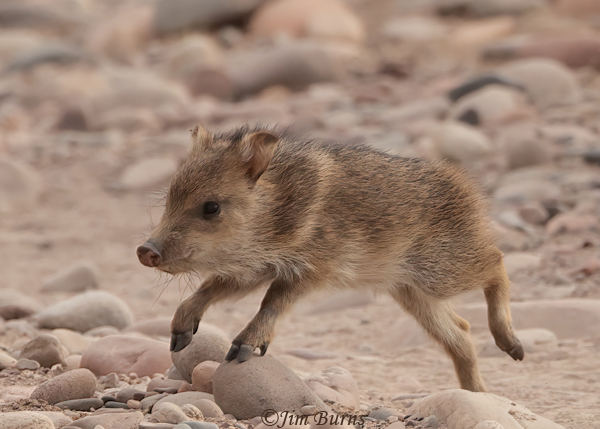But all that is over now, and the winter doldrums are upon us. The mega rare vagrant and the spectacular “family jewel” on the back of the camera are now so scarce no amount of time in the field seems to turn them up. Winter birds, winter landscapes, all typical behavior, all monochrome color. But, still, I’m out here pounding sand, still eschewing any thought of a switch to black and white, fully anticipating . . . anything. Something?
The water levels have dropped dramatically since I was here a week ago when the river was still bankfull to bankfull. Today I can get out onto my favorite gravel bar in just my hiking boots, and the “water people” are out of luck until next spring, not a kayak or raft in sight. A Bald Eagle passes directly overhead, but it has come from behind me and I only see it going away. A tail shot. Somewhere downstream a Belted Kingfisher rattles. No ducks to be seen. Common Mergansers will hopefully ply the river soon.
A Spotted Sandpiper, now in basic plumage without its spots, hunts and pecks upstream through river rocks twice its size, its constantly bobbing tail the only diagnostic birders need at this season, but too distant for the camera. The strident “teew, teew, teew” of a Greater Yellowlegs carries over the water from somewhere unseen. A Great Egret flies slowly toward me, flushing a Snowy Egret that has been prospecting behind larger rocks, but I am unmoved. I am not wasting pixels on large white birds unless they get into protracted territorial combat over fishing rights.
As the morning warms I begin to see all the usual suspects. Song Sparrows flip in and out of the streamside brush. I hear pipits calling but nothing lands nearby, and a Black Phoebe works the far shore. I glance at my watch. I think about looking for a sunny spot under a mesquite to take a nap. My mind wanders from avian to mammalian. Occasionally I see, often hear, Coyotes here, once I’ve seen a Bobcat, a raccoon once, once even watched a River Otter haul out on the opposite bank and disappear into the woods.
I splash out of the water, trudge up the bank to the trail, and begin walking upstream where there’s been a rumor of Barn Owls in the cliffs. The mesquite bosques are quiet, no Western Bluebirds yet. Where are the Phainopeplas? I decide if I don’t raise the camera by the time I reach the huge cottonwood where one of the eagles often loafs, I’ll head for home.
That cottonwood! I recall the time I actually heard the eagle pair copulating directly above me in that tree. I had neither seen nor heard them fly in, but was suddenly startled to hear their odd, piercing, other worldly whistles, so unlike what birders expect from a top raptor, and then the thrashing wings. But they had been occluded by overhanging branches, and I caught only the movement. Could I ever be so lucky again?
Well . . . yes! A Javelina bolts across the path, not twenty yards ahead, and disappears into the brush. Alright, I freeze and raise the camera. Over the years I’ve had many Javelina experiences--with the camera. Portraits, close-ups of those lethal looking canine teeth with which they chew on cacti, spines and all, adults squabbling with one another. And without the camera--a couple times I’ve seen Javelina babies, the cutest young on the planet, but I’ve never gotten the camera on them. I’ve wanted Javelina babies in the camera for years.
In the grand mammalian scheme of things, Javelina don’t appear very . . . “smart.” I’ve heard them spook from me through the bush fifty yards away and never even seen them, but I’ve also had them walk right toward me to within ten yards. Now I remember why--“poor eyesight, amazing noses.” There’s a slight breeze, cold but gentle, against my face, out of the north, upstream, but I am downstream from where this one crossed my path. So I stay frozen and wait, camera up.
There is movement, now, just beyond where the adult disappeared. A baby Javelina trots out onto the path, looking for mama, and my head explodes. It looks to be maybe two months old, not a miniature of the adults but reddish blonde with that dark stripe down its back, its little snout twitching and turning, testing both the air and the adult footprints it is following. Yes, something has finally happened. Not avian, but still, I can’t wait to get home and see this little guy on the computer. As it sometimes happens, those last frames are the best ones of the day.